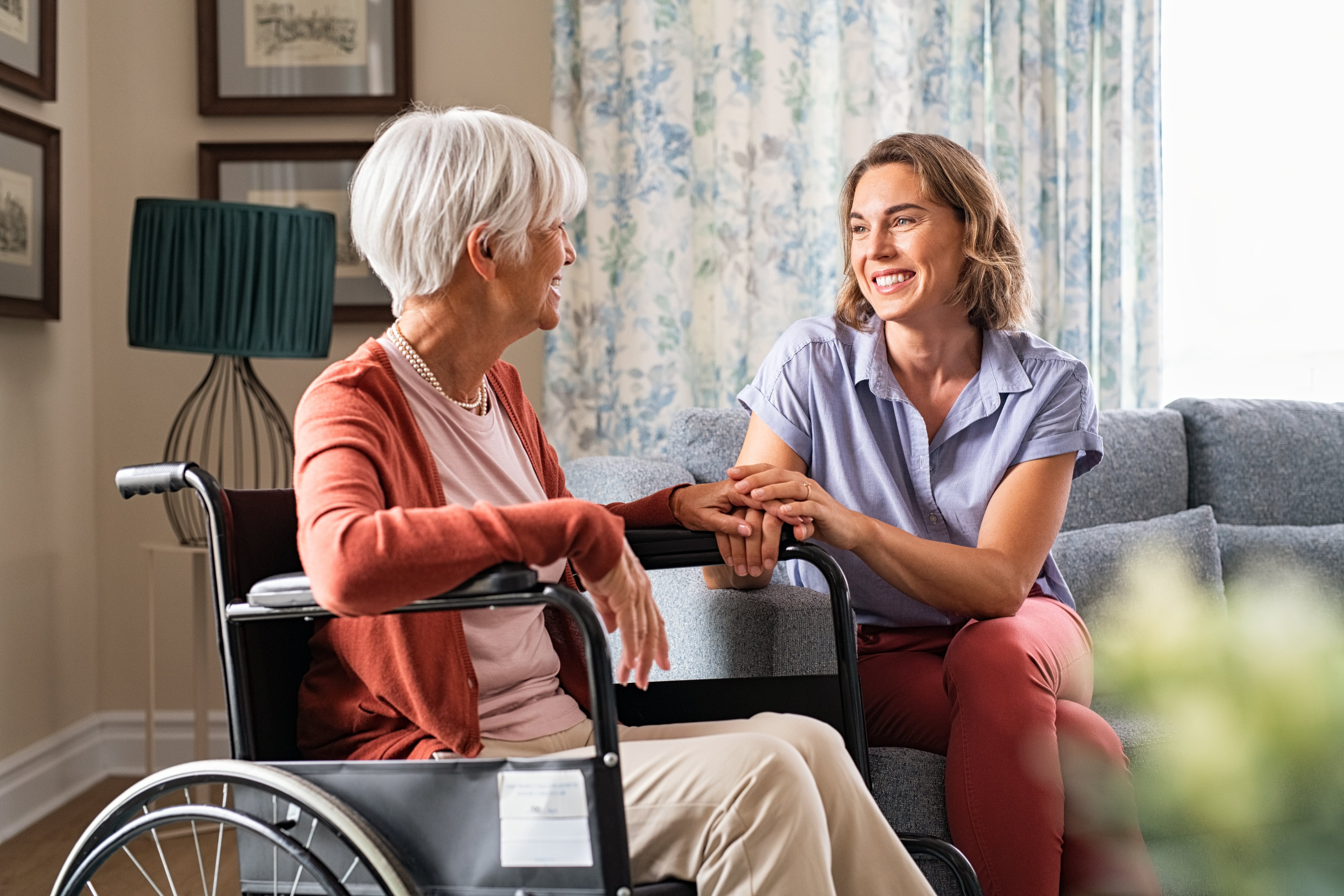More and more families are stepping into the role of caregiver, finding themselves caring for elderly loved ones at home. Whether it’s helping a parent, grandparent or spouse, one thing quickly becomes clear: making the home safer isn’t just helpful, it’s really quite important.
Aging in place is something many older adults want, and it’s easy to see why. Home is familiar and comfortable. But staying there safely takes a bit of planning. If you’re wondering how to take care of elderly loved ones at home without getting overwhelmed, the good news is that even little changes can make a big difference.
In this post, we’ll walk through practical ways to create a safer, more accessible home.
The Caregiver Role, and What It Really Means

If you’re caring for an elderly loved one at home, you’re not “just helping out.” You’re keeping them safe, managing daily routines and making sure they feel as comfortable and independent as possible. That’s a lot. If it feels like a full-time job sometimes, that’s because it kind of is.
One of the hardest parts about being a caregiver is how quickly things can change. One day, everything feels manageable, and the next, you’re dealing with a fall, a new health concern or just a really tough day. It’s a lot to carry, and most of us are figuring it out as we go.
That’s why one of the best caregiver tips is this: try to be a little more proactive than reactive. You don’t need to overhaul the whole house overnight, but small changes (like adding a grab bar or moving a tripping hazard) can go a long way. It’s all about staying one step ahead when you can, so you're not scrambling when something comes up.
Top Home Safety Risks for Older Adults
When it comes to senior home safety, the biggest risks are often the ones we don’t think twice about, until something goes wrong. The truth is, most homes just aren’t designed with aging in mind. That’s why it’s so important to look at your space with fresh eyes, especially if you’re caring for an older adult at home.
One of the biggest issues? Falls. They’re the leading cause of injury in older adults, and they can happen fast. Something as small as a loose rug, a dark hallway or a slippery bathroom floor can become a real danger. Poor lighting makes it harder to see obstacles, and cluttered or uneven floors can easily catch a foot or walker. Even high shelves or deep cabinets, things that used to be no big deal, can turn into safety hazards.
Elderly home safety isn’t about turning your house upside down. It’s about noticing what might trip someone up, literally or figuratively, and fixing it before it becomes a problem.
Home Accessibility Modifications to Consider
Once you’ve tackled the small stuff, it might be time to think about bigger home accessibility modifications. These changes can make everyday life easier and safer, especially if your loved one uses a walker or wheelchair, or if mobility is starting to become a challenge.
-
If your entryway has stairs, a zero-step entry or a sturdy ramp can be a total game changer.
-
Inside the home, swapping out traditional knobs for lever-style door handles or faucets can make things easier to grip and turn, especially for aging hands.
-
Add ADA approved grab bars in the bathtub / shower area
-
In the bathroom, a shower chair and a handheld shower head with an on/off button can help your loved one stay independent while reducing the risk of slips.
-
Change the shower hose to be longer, at least 72” in length for better access
These upgrades are relatively simple but go a long way in supporting accessibility at home.
Bathroom Safety: One Room That Needs Special Attention

If there’s one room that deserves extra attention, it’s the bathroom. Most falls at home happen here, and it’s easy to see why. Wet floors, tight spaces and slippery surfaces don’t mix well with limited mobility. When you're thinking about safety for elderly loved ones in the home, this should be the first place you look.
One smart upgrade? A Quick Tub Walk-Thru Insert. It turns a traditional bathtub into something much easier and safer to step into, without the cost and mess of a full remodel. It’s a great option for anyone who still enjoys a bath but struggles with high tub walls. Also consider things like non-slip rugs, night lights and maybe even a raised toilet seat. Keep in mind that raised toilet seats are not all created equal. So, do your research before purchasing one of those.
No matter the setup, keeping the bathroom safe is key to maintaining independence and preventing accidents. Even small changes can make a big impact when it comes to elderly home safety.
Building a Daily Routine with Safety in Mind
When you're caring for the elderly at home, safety isn't just about what you install, it's also about the habits you build. A good daily routine can go a long way in preventing accidents and catching problems early.
-
Start with regular check-ins, even if it’s just a quick walkthrough in the morning. Look for things like spills, trip hazards or anything out of place. These small, everyday caregiver tips can make a big difference over time.
-
It also helps to keep the conversation open. Encourage your loved one to speak up if something feels harder than usual, like getting out of bed, using the bathroom or walking to the kitchen. Pain or fatigue can sneak up quietly, so keeping that line of communication open matters.
-
And if you’re juggling a lot, consider using a simple checklist. It can help you stay on top of changes, track medication routines or remember tasks that might otherwise fall through the cracks.
When caring for the aging, being proactive is one of the best tools you’ve got.
When to Ask for Help
One of the most important caregiver tips? Know when to ask for help. Caring for the elderly at home is a big job, physically, mentally and emotionally. You don’t have to do it all alone, and honestly, you shouldn’t.
If your loved one’s needs are starting to feel like more than you can manage, it might be time to bring in a little extra support. A home health professional can help with medical care, while an occupational therapist can offer suggestions to improve safety for elderly in the home and help them stay independent longer.
It might also be worth looking into local programs and services. Many communities have things like senior centers, transportation assistance, meal delivery and even respite care options. These are all designed specifically for caring for people who are aging. Using those resources can ease your load and help your loved one feel more supported.
At the end of the day, being a caregiver doesn’t mean being everything to everyone. It means making sure your loved one is safe and cared for, and sometimes, that means knowing when to reach out.
In order to make your home safer for aging loved ones, you don't need to redo everything all at once. Sometimes, the best approach is to start small. Maybe focus on one room or tackle the biggest safety risks first.
Bathrooms are a great place to begin, and as we mentioned, a Quick Tub insert can be an easy, effective way to improve senior home safety without a full renovation. Little changes like that add up, making daily life easier and giving everyone peace of mind.
FAQ Section
Where do most home accidents occur?
Most home accidents occur in the bathroom and kitchen, though falls are the leading cause of injury and death throughout the home.
How do we ensure safety in working as a caregiver?
Ensuring safety as a caregiver requires a proactive approach to protect both yourself and the individual you're assisting. Key strategies focus on injury prevention, maintaining a safe environment, and personal preparedness:
- Prevent Injuries: Focus on minimizing the risk of falls, strains, and other accidents for both yourself and the care recipient.
- Maintain a Safe Environment: Always watch your step and promptly clean up any spills or hazards to prevent trips and falls.
How to make a home safer for the elderly?
Making a home safer for older adults involves a multi-faceted approach focused on preventing falls, ensuring emergency preparedness, and addressing specific hazards in key areas like the kitchen and bathroom.
- Clear Clutter & Secure Surfaces: Remove throw rugs, secure loose carpets, and keep pathways free of obstructions. Use non-slip mats or strips in bathrooms and on wet surfaces.
- Improve Lighting: Ensure consistent and bright lighting throughout the home, particularly at the top and bottom of stairs, and consider installing nightlights or motion-activated lights.
- Add Support Rails: Install sturdy handrails on both sides of stairways and grab bars in the bathroom near the toilet, shower, and tub.
- Optimize Storage: Store frequently used items at chest level to avoid the need for stretching or using unstable chairs.
- Proper Footwear: Encourage the use of shoes with good traction indoors.
What is the biggest trip hazard at home for seniors?
Throw rugs are the biggest trip hazard at home for seniors. Studies consistently show that falls caused by loose or detached rugs and carpets are a major cause of injury among adults aged 65 and older. The danger of these unsecured rugs lies in their tendency to bunch up or bulk, creating an unstable surface that is easy to trip over.



Share:
What Is a Bathtub Cut Out and How Does It Work?
What Makes a Good Grab Bar? Key Features You Can’t Ignore